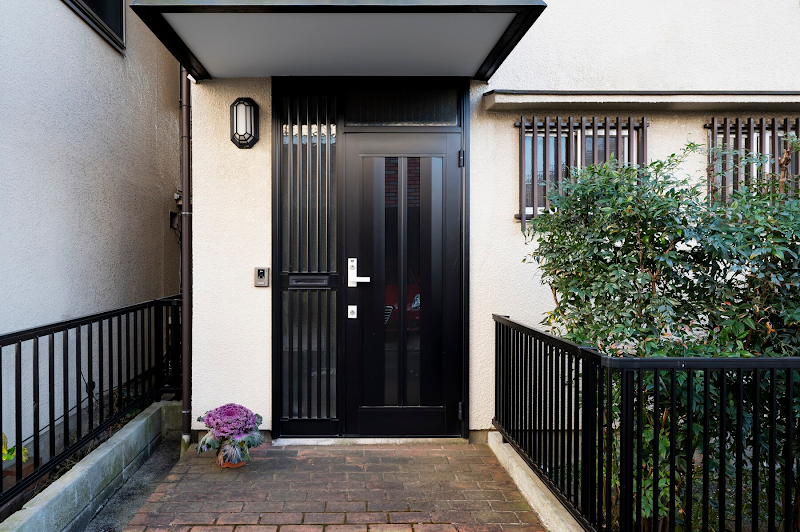A home can say a lot about its owner—more than you might expect. Your home’s exterior is the first thing people see when they visit, whether they’re potential buyers, guests, or your neighbors. This first impression is powerful, shaping how others perceive your home’s value, your personality, and even your level of success.
But here’s the critical secret—your home’s exterior isn’t just about “Nice House.” It’s about creating an emotional connection, a “wow” moment, that draws people in. With strategic exterior upgrades, you can make your home unforgettable and elevate its perceived value.
This guide breaks down how curb appeal goes beyond beauty.
We’ll explore the psychology behind first impressions, the key elements that influence perception, and actionable steps you can take today to maximize your home’s potential.
The ROI of a First Impression
How Curb Appeal Adds Value
Curb appeal is a powerful way to boost your home’s value. It’s not just about aesthetics—it creates a lasting first impression and can help sell your home faster and for a higher price.
Take your front door, for example. A unique wooden front door can serve as the centerpiece of your home’s exterior. You can ask a custom front door contractor to reflect your personal style while making your house stand out. Whether it’s a brightly colored door or one crafted from high-quality materials like wood or glass, a striking front door adds character and polish to your home.
Investing in curb appeal with upgrades like fresh paint, clean landscaping, and a standout front door is more than just cosmetic—it’s a smart investment in your home’s future value.
Beyond Aesthetics: The Tangible Benefits
A strong first impression yields measurable results. Studies show that homes with excellent curb appeal sell faster and for up to 7% more money compared to similar homes with average exteriors. It’s not just about looks; it signals to others that you’re attentive, stable, and successful.
Psychologically, a beautiful home exterior sends a positive message. It says you care. And that care—a vital detail—establishes credibility and builds trust, even subconsciously. Plus, simple updates like fresh paint, landscaping, or a new front door can offer an average ROI of 70% to 100%, making your investment in curb appeal worthwhile.
Decoding the Exterior Equation
What makes for an appealing home exterior? The good news is that small tweaks can deliver massive impact. From landscaping to lighting, every element contributes to the bigger picture.
Landscaping as Strategic Asset Allocation
Landscaping is more than just greenery; it’s a long-term investment into your property’s value. Professionally landscaped homes tend to sell for 5–12% more than those without, according to real estate research.
For example, incorporating native plants not only boosts curb appeal but reduces maintenance costs. Trend-wise, sleek hedges and wildflower borders are gaining traction for their eco-friendliness and understated elegance.
Flowers by the walkway, neatly trimmed bushes, or adding shade trees can create a welcoming yet refined look. These thoughtful touches show visitors you value design and harmony.
The Front Door: Your Brand’s Visual Touchpoint
Your front door plays a pivotal role in shaping your home’s personality. It’s not just an entry point; it’s like the logo of your house. A vibrant red door suggests energy and enthusiasm, while a matte black door exudes sophistication.
For example, a sleek modern door signals minimalism, while a rustic wooden door conveys warmth and tradition. It’s a small detail that speaks volumes.
Lighting: Illuminating Value and Security
Proper outdoor lighting has dual benefits—it enhances security and aesthetics. Highlight architectural features with warm, soft lighting or add solar-powered path lights for a sustainable yet stylish glow.
Investing in energy-efficient LED lights also reduces long-term costs while keeping your home well-lit and inviting.
Architectural Harmony
Your home’s exterior should tell a cohesive story. When landscaping, lighting, and design choices complement the home’s architecture, the result is a unified look. This harmony is key to creating a polished and high-value impression.
For instance, a colonial-style home pairs well with brick pathways and symmetrical landscaping, while a contemporary design benefits from clean, minimalist lines and sharp lighting.
The Psychology of Perception
Signaling Success
Human psychology loves cues, and your home’s exterior offers plenty. A freshly painted façade and weed-free garden silently convey success and stability.
These subconscious details don’t just make visitors feel more comfortable—they also affect how they perceive you as a homeowner. Neatly trimmed hedges and a clean driveway? That equals trustworthiness.
Creating a “Sense of Place”
Your home isn’t just your dwelling; it’s your sanctuary. A beautifully maintained exterior fosters emotional acceptance and comfort. Guests feel welcome, neighbors admire your space, and buyers want to be a part of it.
A sense of place isn’t quantitative; it’s emotional. Create it with a cohesive design that feels both inviting and personal.
Actionable Strategies to Elevate Your Curb Appeal
Want to find out where your home’s exterior stands? Start with a self-assessment or even a homeowner-friendly SWOT analysis (Strengths, Weaknesses, Opportunities, and Threats).
For instance, does your garden look lush and inviting, but your porch feels outdated and neglected? Maybe your driveway could use resurfacing, or your house numbers are barely visible from the curb. Identify these gaps, then prioritize based on what improvements would deliver the highest return on investment (ROI).
Don’t forget to consider functionality. Practical upgrades like reinforced pathways or better drainage systems can boost appeal while adding long-term value.
Strategic Upgrades
Focus your efforts on high-impact areas that create a lasting impression. Your front entrance, for example, sets the tone for the entire home. Adding a bold door color can draw attention and make your home stand out in a positive way.
For a more unique touch, consider installing a modern wood or steel door with decorative glass inserts. Landscaping also plays a significant role; clean up overgrown bushes, add seasonal flowers, or plant trees to provide shade and dimension. Don’t overlook the power of lighting—install contemporary, energy-efficient fixtures to illuminate pathways, highlight your home’s architecture, and improve safety. Even small details, like replacing an old mailbox with a sleek, modern design or adding shutters for a cozy, farmhouse feel, can create a big impact that ties the whole look together.
Professional Partnerships
For larger or more complex projects, consider partnering with professionals like landscape designers, custom contractors, or exterior home designers. Their expertise ensures that each dollar you spend is optimized for both aesthetics and functionality.
For example, a landscape designer can plan a cohesive layout for your garden that includes native plants requiring less maintenance, saving you money over time. Similarly, a contractor can help with structural updates, such as enhancing your porch or building a pergola to elevate outdoor spaces. These professionals can also offer insights into cost-effective materials or innovative designs that align with your vision, ensuring your curb appeal upgrades not only look polished but also increase your property value significantly.
Curb Appeal as a Competitive Advantage
Your home’s exterior is one of the most strategic assets you have. From increasing property value to creating a lasting emotional connection, investing in curb appeal is not just about aesthetics—it’s about making people feel something.
Treat your home like the brand it is. By cultivating a thoughtful, well-maintained exterior, you’re investing in success, perception, and value.
Remember, in the world of first impressions, curb appeal isn’t a luxury—it’s your most vital competitive advantage.

